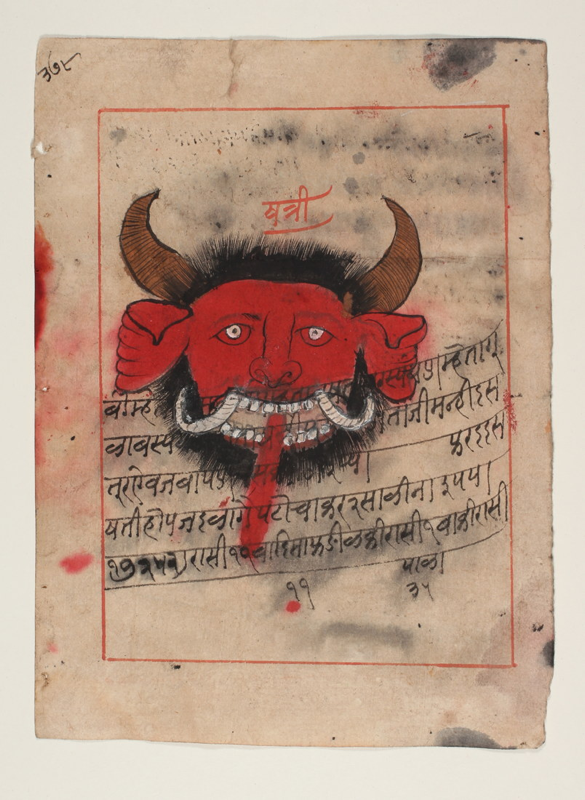I?m very excited to present Magic Markings for the second time at the Outsider Art Fair, New York. The fair celebrates it?s 25th year and there are a number of galleries that have been here from the beginning, which says something of their passion and commitment to the field.
Passion is the dynamic energy that drives everything that?s important to us, and it expresses itself in different ways. The Tantric and vernacular Indian drawings that I?ve been collecting and exploring (with ardour) for the past two decades have an intensity and purpose that reflects their role in the lives of their makers and intended recipients. They not only convey a complex and total world-view, but they are also, in the main, utilitarian drawings and visual ceremonial guides. These drawings were created to express devotion and to guide the viewer/ participator towards understanding the nature of reality and help transcend their (and our) limitations. Whether or not we feel we have something of value to learn from their philosophical and spiritual roots (and I do), the world-view depicted in these drawings do at the very least invite us to question our own assumptions and mind-sets.
Given their function, these works were not made to be ?art? in the way many of us understand it. As an artist, they are a reminder of the possibilities of the role of art (and drawing in particular) to communicate essential and elemental beliefs- and the expression of love, untouched by analytical critical discourse or cynicism.
I love the generosity of spirit, the playfulness, the lack of preciousness or pomposity in these drawings. They are both delicate and intensely powerful, mysterious but very direct. So many of them have been worn and creased, they bear the marks of ceremonial use and have developed a patina. I find them beautiful and compelling, magical in their everydayness.
This exhibition within a booth within a fair presents a number of different collections.
Broadly speaking they all relate to cosmology- a conception of the universe and our relationship to it. This covers a variety of practices and disciplines including astrology/ astronomy, devotion, divination, healing, meditation, yoga.
The aural aspect of Tantric practice is the Mantra- the repetition of sounds, words and names. Whilst they are normally, by definition heard but not seen, there are manuscripts that illustrate the recitation of sacred vowels in Sanskrit , or the invocation of deities. One is a repetition of the name Rama and the other a blessing of Sri Matta- the Mother Goddess.
A Yantra is a codified spiritual diagram that depicts the underlying structure of the universe according to Tantric practice using symbolic icons, geometric patterns as well as occasional figurative references to a deity. As tools for meditation and rituals the diagrams help to focus the mind of the practitioner to use the senses as fuel for transformation and spiritual unity.
.
Shaligrams are sacred stones and fossils found on the bed of Lake Gandaki in Nepal. With their very particular shapes, colours and marks they are said to represent a myriad of qualities related to Vishnu and his avatars. These Shaligram drawings were made c1970?s by Badrinath Pandit, a Vaishnavite priest and astrologer who was also said to be a teacher of Acharya Vyakul.
Acharya Ram Charan Sharma Vyakul came to prominence in 1989 in the exhibition Magiciens de la Terre in Paris and was subsequently exhibited in galleries and museums worldwide.
I was very fortunate to meet Vyakul in 1996 or 1997 and then each year till his death in 2000. Vyakul was a scholar and author who ran the Museum of Indology in Jaipur. His own drawings were a personal and unique reflection of a spiritual vision that referred to a spiritual system without being contained or restricted by it.
The serpent has a profound and varied role in Hindu, Jain and Tantric cosmology. It appears in multiple guises in mythological stories, as a demon, deity or protector. Shiva wore a snake around his neck, and Vishnu rests on Ananta-Shesha, a multi headed Cobra. These drawings of snakes are equally varied and date from the late 18th C. to the present day. Brahmanda, The Cosmic Egg The ovoid form sometimes references the lingam but also the singular atom or seed from which all creation evolved. It can also be taken as the Macro-cosmic form that contains the universe. These drawings, made with natural pigments and ground semi precious stones, are embedded into the paper with a burnishing agate that gives them a dense materiality and sheen. They are approximately 30 years old and unsigned. 


Magic Markings: Booth #33

Mantras

Yantras

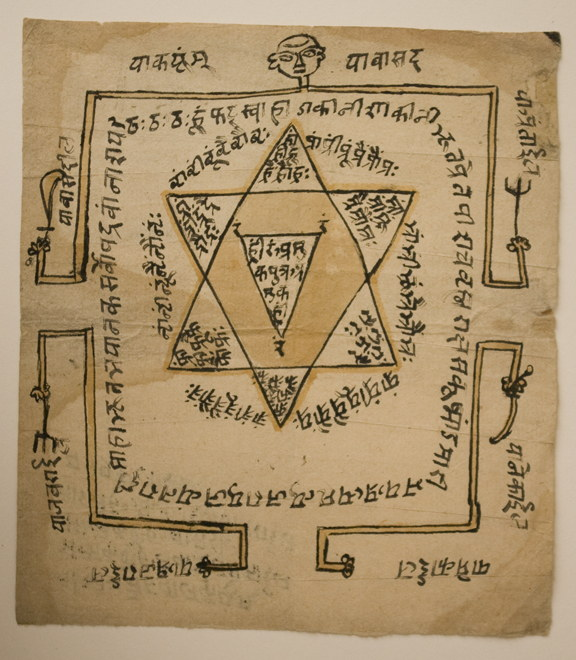
Shaligrams


Works by Acharya Vyakul, 1930- 2000

A Wall of Snakes
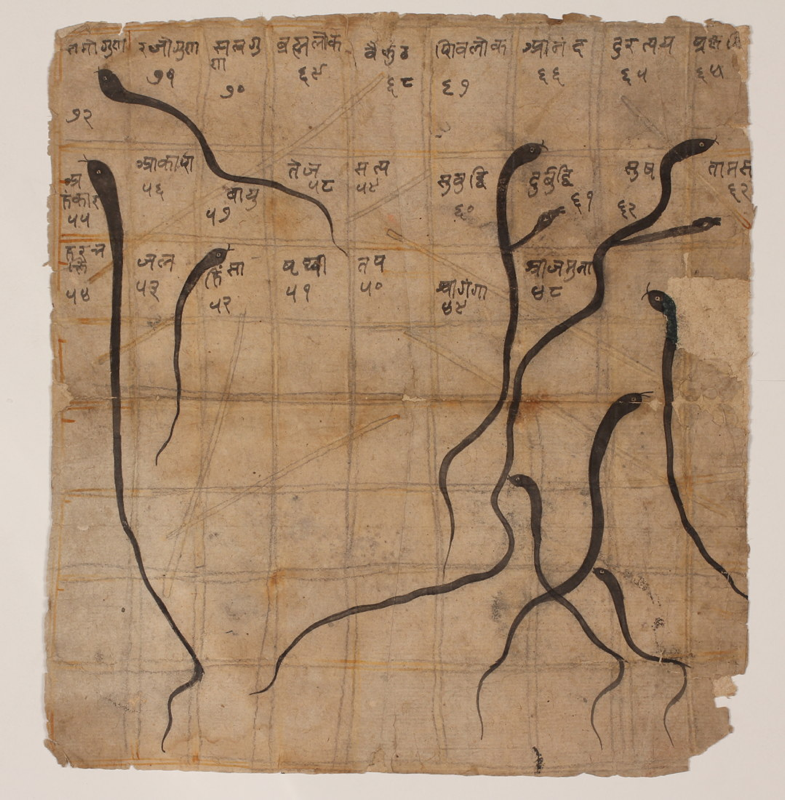
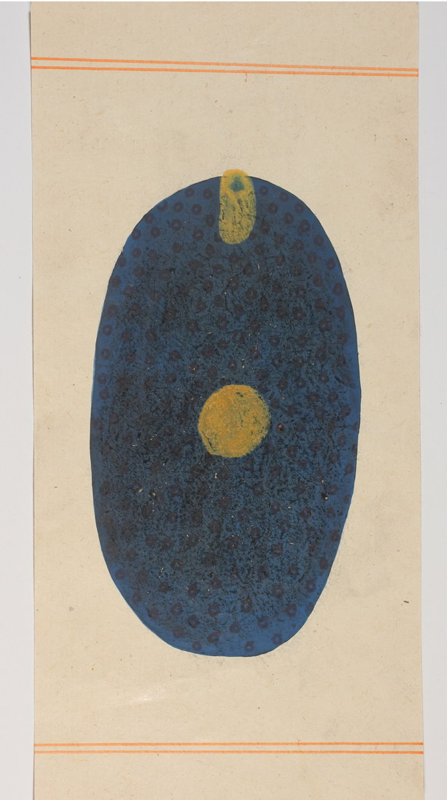
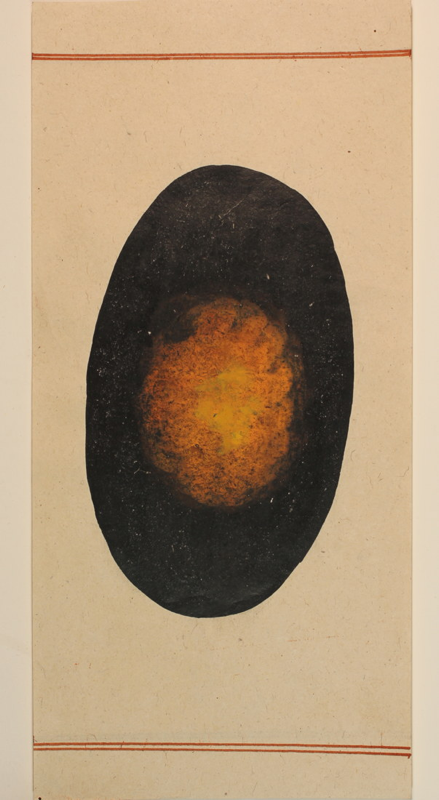
Works by Kalu Ram, c 1950- 2008
Kalu Ram was a an artist who focused almost exclusively on Tantric subject matter. As such he is fascinating in his versatility and demonstrates the varied forms of Tantric art. His works include a chart of Shaligrams, a drawing of a Goddess and various snake forms representing Kundalini.
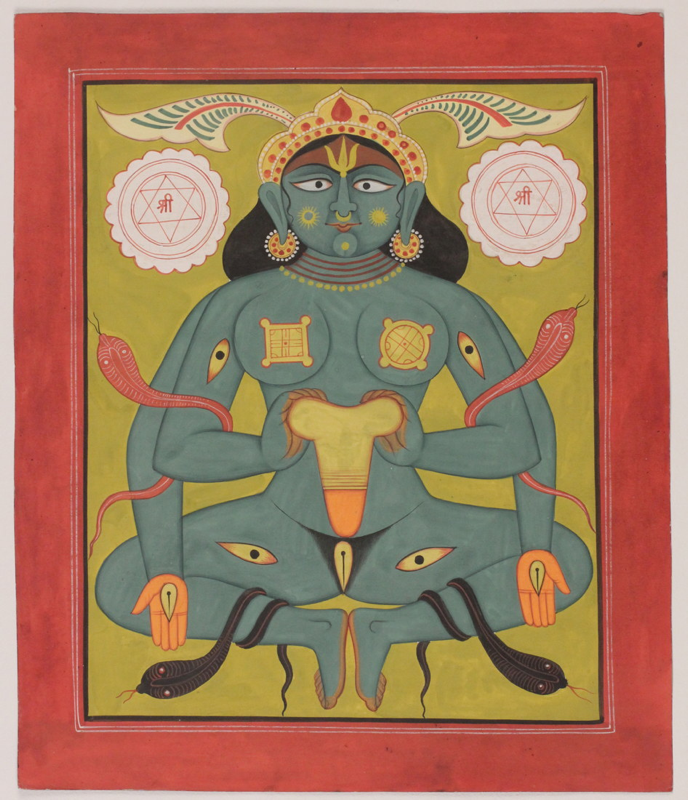
Erotic Drawings
There are a number of groups of drawings related to Kama Sutra, including a set from Orissa. The complexity and effort of the postures is belied by the ease and levity of the drawings.
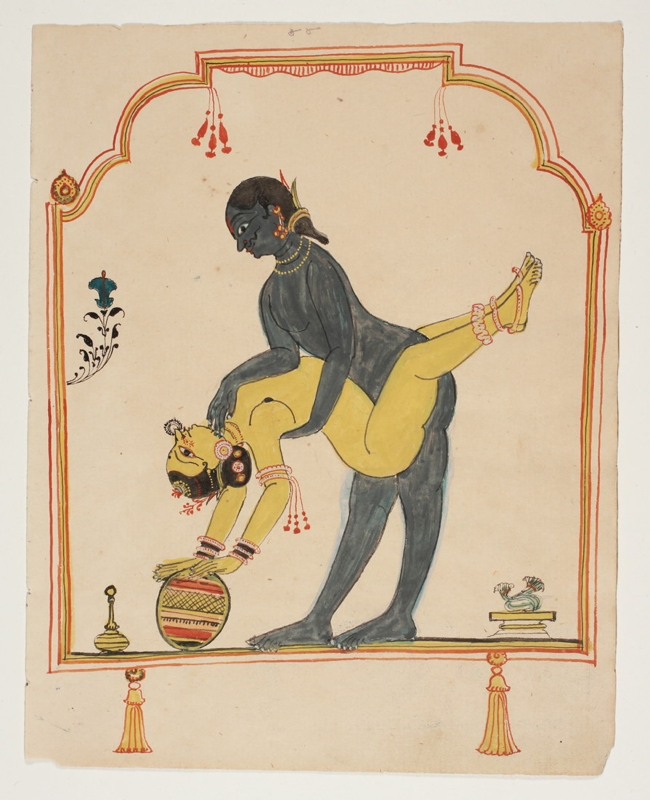
Devils and Demons
This suite of four drawings of demonic figures dates from the latter half of the 20th Century.
